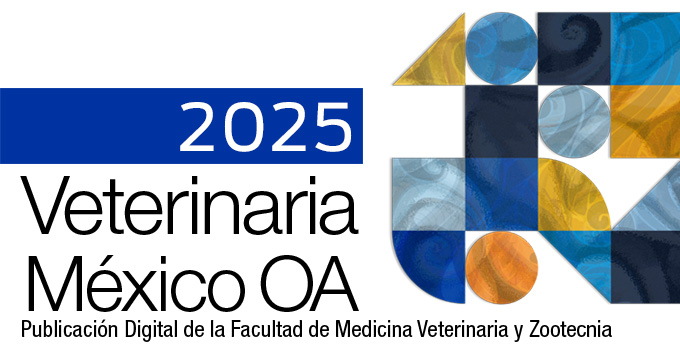Non-Ventilation Conditions During Incubation at High Altitude Modify Embryonic Development and Hatchability of the Broiler Breeder’s Eggs
Main Article Content
Abstract
This study explores the impact of gradually increasing high carbon dioxide (CO2) levels during the first 10 days of incubation at high altitude. Two ventilation conditions were compared. In the first, CO2 concentration gradually accumulated by the embryo's metabolism in a non-ventilated (NV) incubator during the first 10 days of embryonic development (ED10). In the second condition, the incubator was normally ventilated (V). Both treatments received V conditions for the remainder of the incubation period. The CO2 concentration in the V incubator remained at 0.13 % during the first ED10 days, whereas in the NV, the concentration gradually increased from 0.14 % to 0.9 %. Throughout the incubation, NV exhibited significantly lower (P < 0.05) embryonic mortality compared to V. Remarkably, the hatchability of fertile eggs (HFE) was 10 % significantly higher (P < 0.05) in NV conditions than V group. NV conditions at high altitude (2 230 m) produced embryos with heavier yolk-free body mass and a progressive trend of lighter yolk-sac weights from ED10 day until hatch. The weight of hatchlings in the NV treatment was 43.4 g, with a length of 17.5 cm, both of which were significantly higher (P < 0.05) than hatched chicks from the V group (41.5 g and 17.2 cm respectively). The NV condition at high altitude positively influenced the quality of hatchling chicks. We conclude that the NV condition, with a gradual increase of CO2 concentration during the first 10 days of incubation at high altitude, is preferable to the V conditions.
Article Details
References
Mortola JP, Al Awam K. Growth of the chicken embryo: implications of egg size. Comparative Biochemistry and Physiology, Part A: Molecular & Integrative Physiology. 2010;156(4):373−379. doi: 10.1016/j.cbpa.2010.03.011.
Cooper CB, Voss MA, Ardia DR, Austin SH, Robinson WD. Light increases the rate of embryonic development: implications for latitudinal trends in incubation period. Functional Ecology. 2011;25(4):769−776. doi: 10.1111/j.1365-2435.2011.01847.x.
Ho DH, Reed WL, Burggren WW. Egg yolk environment differentially influences physiological and morphological development of broiler and layer chicken embryos. Journal of Experimental Biology. 2011;214(4):619−628. doi: 10.1242/jeb.046714.
Bilalissi A, Meteyake HT, Kouame YAE, Oke OE, Lin H, Onagbesan O, et al. Effects of pre-incubation storage duration and nonventilation incubation procedure on embryonic physiology and post-hatch chick performance. Poultry Science. 2022:101(5):101810. doi: 10.1016/j.psj.2022.101810.
Bednarczyk M, Dunislawska A, Stadnicka K, Grochowska E. Chicken embryo as a model in epigenetic research. Poultry Science. 2021;100(7):101164. doi: 10.1016/j.psj.2021.101164.
Molenaar R, Reijrink IAM, Meijerhof R. Van den Brand H. Meeting embryonic requirements of broilers throughout incubation: a review. Brazilian Journal of Poultry Science. 2010;12:(3):137−148. doi: 10.1590/S1516-635X2010000300001.
Boleli IC, Morita VS, Matos Jr JB, Thimotheo M, Almeida VR. Poultry egg incubation: integrating and optimizing production efficiency. Brazilian Journal of Poultry Science. 2016;8(spe 2):1−16. doi: 10.1590/1806-9061-2016-0292.
De Smit L, Bruggeman V, Tona JK, Debonne M, Onagbesan O, Arckens l, et al. Embryonic developmental plasticity of the chick: increased CO2 during early stages of incubation changes the developmental trajectories during prenatal growth. Comparative Biochemistry and Physiology - Part A: Molecular & Integrative Physiology. 2006;14582):166−175. doi: 10.1016/j.cbpa.2006.06.046.
Everaert N, Kamers B, Witters A, de Smit L, Debonne M, Decuypere E, Bruggeman V. Effect of four percent carbon dioxide during the second half of incubation on embryonic development, hatching parameters, and posthatch growth. Poultry Science. 2007;86(7):1372−1379. doi: 10.1093/ps/86.7.1372.
Tona K, Voemesse K, N’nanlé O, Oke OE, Kouame YAE, Bilalissi A, et al. Chicken incubation conditions: role in embryo development, physiology, and adaptation to the post-hatch environment. Frontiers in Physiology. 2022;13:895854. doi: 10.3389/fphys.2022.895854.
Spicer JI, Burggren WW. Development of physiological regulatory systems: altering the timing of crucial events. Zoology. 2003;106(2):91−99. doi: 10.1078/0944-2006-00103.
Rundle SD, Spicer JI. Heterokairy: a significant form of developmental plasticity? Biology Letters. 2016;12(9):20160509. doi: 10.1098/rsbl.2016.0509.
Blacker HA, Orgeig S, Daniels CB. Hypoxic control of the development of the surfactant system in the chicken: evidence for physiological heterokairy. American Journal of Physiology-Regulatory, Integrative and Comparative Physiology. 2004;287(2):R403−R410. doi: 10.1152/ajpregu.00399.2003.
Ar A, Deeming DC. Roles of water and gas exchange in determining hatchability success. Avian Biology Research. 2009;2(1−2):61−66. doi: 10.3184/175815509x431830.
Mortola JP. Gas exchange in avian embryos and hatchlings. Comparative Biochemistry and Physiology, A: Molecular and Integrative Physiology. 2009;153(4):359−377. doi: 10.1016/j.cbpa.2009.02.041.
Hassanzadeh M, Fard MHB, Buyse J, Bruggeman V, Decuypere E. Effect of chronic hypoxia during embryonic development on physiological functioning and on hatching and post-hatching parameters related to ascites syndrome in broiler chickens. Avian Pathology. 2004;33;(6):558−564. doi: 10.1080/03079450400013188.
Chan T, Burggren W. Hypoxic incubation creates differential morphological effects during specific developmental critical windows in the embryo of the chicken (Gallus gallus). Respiratory Physiology & Neurobiology. 2005;145:(2−3):251−263. doi: 10.1016/j.resp.2004.09.005.
Tintu A, Rouwet E, Verlohren S, Brinkmann J, Ahmad S, Crispi F, et al. Hypoxia induces dilated cardiomyopathy in the chick embryo: mechanism, intervention, and long-term consequences. PloS ONE. 2009;4(4):e5155. doi: 10.1371/journal.pone.0005155.
Sharma SK, Lucitti JL, Nordman C, Tinney JP, Tobita K, Keller BB. Impact of hypoxia on early chick embryo growth and cardiovascular function. Pediatric Research. 2006;59(1):116−120. doi: 10.1203/01.pdr.0000191579.63339.90.
Haron A, Ruzal M, Shinder D, Druyan S. Hypoxia during incubation and its effects on broiler's embryonic development. Poultry Science. 2021;100(3):100951. doi: 10.1016/j.psj.2020.12.048.
Galli GLJ, Lock MC, Smith KLM, Giussani DA, Crossley DA. Effects of developmental hypoxia on the vertebrate cardiovascular system. Physiology (Bethesda). 2023;38(2):53–62. doi: 10.1152/physiol.00022.2022.
García HJ, Juárez EMA, López CS. Gradual increase of CO2 during first (sic.) stages of incubation with late (sic.) change of O2 partial pressure, modifies the hatch trajectory of broiler chicks. Veterinaria México. 2013;44(1):1−16.
Juárez-Estrada MA, López-Ruiz EI, López-Cordova S, Tellez-Isaias G, Prado-Rebolledo OF. Increased CO2 levels during the first half of incubation at high altitude modifies (sic.) embryonic development of fertile Leghorn breeder eggs. Food and Nutrition Sciences. 2024;15(7):524−547. doi: 10.4236/fns.2024.157035.
Visschedijk AHJ. Physics and physiology of incubation. British Poultry Science. 1991;32(1):3−20. doi: 10.1080/00071669108417323.
Ahmed M, Biswas A, Roy BG, Srivastava RB. Frequently encountered problems during hatching in cold arid high altitude regions such as Ladakh in India: causes and remedies. World’s Poultry Science Journal. 2013;69(4):897−901. doi: 10.1017/S0043933913000895.
Okur N, Eratalar SA, Yigit AA, Kutlu T, Kabakçi R, Özsoy SY. Effects of incubator oxygen and carbon dioxide concentrations on hatchability of fertile eggs, some blood parameters, and histopathological changes of broilers with different parental stock ages in high altitude. Poultry Science. 2022;101(2):101609. doi: 10.1016/j.psj.2021.101609.
Okur N. Effects of incubator carbon dioxide and oxygen levels, and egg weight on broilers´ hatchability of fertile eggs. Brazilian Journal of Poultry Science. 2019;21(3):1−7. doi: 10.1590/1806-9061-2019-1038.
Yilmaz-Dikmen B, Sahan Ü, Ipek A, Aydin C, Kederli E. Effect of oxygen supplementation in a hatchery at high altitude and growth performance of broiler reared at low altitude. South African Journal of Animal Science. 2014;44:(4)350−359. doi: 10520/EJC163898.
Fernandes JIM, Bortoluzzi C, Schmidt JM, Scapini LB, Santos TC, Murakami AE. Single stage incubators and hypercapnia during incubation affect the vascularization of the chorioallantoic membrane in broiler embryos. Poultry Science. 2017:96(1):220−225. doi: 10.3382/ps/pew274.
Şahan Ü, İpek A, Yilmaz-Dikmen B, Aydin C. Kederli E. Effect of oxygen supplementation in the hatcher at high altitude on the incubation results of broiler eggs laid at low altitude. British Poultry Science. 2011;52(3):388−394, doi: 10.1080/00071668.2011.578122.
Cobb Genetics.com. Cobb Hatchery Management Guide [L-015-01-20 EN]. Arkansas, US: Cobb-Vantress; 2021. https://www.cobbgenetics.com
Fares WA, Ahmed MRM, Rizk RE, Shahein EHA, Boutrous NG, El-Sabrout K. Influence of non-ventilating intervals during early incubation stage on egg hatching process. Veterinary World. 2023;16:(7):1534−1540. doi: 10.14202/vetworld.2023.1534-1540.
De Smit L, Bruggeman V, Debonne M, Tona JK, Kamers B, Everaert N, et al. The effect of nonventilation during early incubation on the embryonic development of chicks of two commercial broiler strains differing in ascites susceptibility. Poultry Science. 2008;87(3):551−560. doi: 10.3382/ps.2007-00322.
Willemsen H, Everaert N, Witters A, De Smit L, Debonne M, Verschuere F, et al. Critical assessment of chick quality measurements as an indicator of posthatch performance. Poultry Science. 2008;87(11):2358−2366. doi: 10.3382/ps.2008-00095.
El-Hanoun A, El-Sabrout K, Abdella M, Eid M. Effect of carbon dioxide during the early stage of duck egg incubation on hatching characteristics and duckling performance. Physiology and Behavior. 2019;208:112582. doi: 10.1016/j.physbeh.2019.112582.
Özlü S, Uçar A, Banwell R, Elibol O. The effect of increased concentration of carbon dioxide during the first 3 days of incubation on albumen characteristics, embryonic mortality, and hatchability of broiler hatching eggs. Poultry Science. 2019; 98(2):771−776. doi: 10.3382/ps/pey464.
Willemsen H, Li Y, Willems E, Franssens L, Wang Y, Decuypere E, et al. Intermittent thermal manipulations of broiler embryos during late incubation and their immediate effect on the embryonic development and hatching process. Poultry Science. 2011;90(6):1302−1312. doi: 10.3382/ps.2011-01390.
Tona K, Bamelis F, De Ketelaere B, Bruggeman V, Moraes VMB, Buyse J, et al. Effects of egg storage time on spread of hatch, chick quality, and chick juvenile growth. Poultry Science. 2003;82(5):736−741. doi: 10.1093/ps/82.5.736.
Tona K, Onagbesan OM, Jego Y, Kamers B, Decuypere E, Bruggeman V. Comparison of embryo physiological parameters during incubation, chick quality, and growth performance of three lines of broiler breeders differing in genetic composition and growth rate. Poultry Science. 2004;83(3):507−513. doi: 10.1093/ps/83.3.507.
Wolanski NJ, Renema RA, Robinson FE, Carney VL, Fancher BI. Relationship between chick conformation and quality measures with early growth traits in males of eight selected pure or commercial broiler breeder strains. Poultry Science. 2006;85(8):1490−1497. doi: 10.1093/ps/85.8.1490.
Tona K, Bruggeman V, Onagbesan O, Bamelis F, Gbeassor M, Mertens K, et al. Day-old chick quality: relationship to hatching egg quality, adequate incubation practice, and prediction of broiler performance. Avian and Poultry Biology Reviews. 2005;16(2):109−119. doi: 10.3184/147020605783438787.
Willemsen H, Debonne M, Swennen Q, Everaert N, Careghi C, Han H, et al. Delay in feed access and spread of hatch: importance of early nutrition. World's Poultry Science Journal. 2010;66(2):177−188. doi: 10.1017/S0043933910000243.
Everaert N, Kamers B, Witters A, De Smit L, Debonne M, Decuypere E, et al. Effect of four percent carbon dioxide during the second half of incubation on embryonic development, hatching parameters, and posthatch growth. Poultry Science. 2007;86(7):1372−1379. doi: 10.1093/ps/86.7.1372.
Rahn H, Carey C, Balmas K, Bhatia B, Paganelli C. Reduction of pore area of the avian eggshell as an adaptation to altitude. Proceedings of the National Academy of Sciences. 1977;74(7):3095−3098. doi: 10.1073/pnas.74.7.3095.
Uni Z, Ferket PR, Tako E, Kedar O. In ovo feeding improves energy (sic.) status of late-term chicken embryos. Poultry Science. 2005;84(5):764−770. doi: 10.1093/ps/84.5.764.
Uni Z, Ferket RP. Methods for early nutrition and their potential. World's Poultry Science Journal. 2004;60(1):101−111. doi: 10.1079/WPS20038.
Everaert N, Willemsen H, Willems E, Franssens L, Decuypere E. Acid–base regulation during embryonic development in amniotes, with particular reference to birds. Respiratory Physiology and Neurobiology. 2011;178(1):118−128. doi: 10.1016/j.resp.2011.04.023.
Walsberg GE. The gaseous microclimate of the avian nest during incubation. American Zoologist. 1980;20(2):363−372. doi: 10.1093/icb/20.2.363.
Scanes CG, Dridi S. Sturkie's Avian Physiology. 7th. ed. San Diego, US: Academic Press; 2021. 1462 pp.
Wolanski NJ, Renema RA, Robinson FE, Carney VL, Fancher BI. Relationships among egg characteristics, chick measurements, and early growth traits in ten broiler breeder strains. Poultry Science. 2007;86(8):1784−1792. doi: 10.1093/ps/86.8.1784.
Deeming DC. Yolk sac, body dimensions, and hatchling quality of ducklings, chicks and poults. British Poultry Science. 2005;46(5):560−564. doi: 10.1080/00071660500255042.
Lourens A, van den Brand H, Meijerhof R, Kemp B. Effect of eggshell temperature during incubation on embryo development, hatchability, and posthatch development. Poultry Science. 2005;84(6):914−920. doi: 10.1093/ps/84.6.914.
Sato M, Tachibana T, Furuse M. Heat production and lipid metabolism in broiler and layer chickens during embryonic development. Comparative biochemistry and physiology. Part A, Molecular and Integrative Physiology. 2006;143(3):382−388. doi: 10.1016/j.cbpa.2005.12.019.
Van der Wagt I, de Jong IC, Mitchell MA, Molenaar R, van den Brand H. A review on yolk sac utilization in poultry. Poultry Science. 2020;99(4):2162−2175. doi: 10.1016/j.psj.2019.11.041.
Şahan Ü, Ipek A, Sözcü A. Yolk sac fatty acid composition, yolk absorption, embryo development, and chick quality during incubation in eggs from young and old broiler breeders. Poultry Science. 2014;93(8):2069−2077. doi: 10.3382/ps.2013-03850.
Moran Jr ET. Nutrition of the developing embryo and hatchling. Poultry Science. 2007;86(5):1043−1049. doi: 10.1093/ps/86.5.1043.
Druyan S. The effects of genetic line (broilers vs. layers) on embryo development. Poultry Science. 2010;89(7):1457−1467. doi: 10.3382/ps.2009-00304.
Christensen VL, Wineland MJ, Fasenko GM, Donaldson WE. Egg storage effects on plasma glucose and supply and demand tissue glycogen concentrations of broiler embryos. Poultry Science. 2001;80(12):1729−1735. doi: 10.1093/ps/80.12.1729.
Ipek A, Sahan Ü, Baycan SC, Sözcü A. The effects of different eggshell temperatures on embryonic development, hatchability, chick quality, and first-week broiler performance. Poultry Science. 2014;93(2):464−472. doi: 10.3382/ps.2013-03336.
French NA. Modeling incubation temperature: the effects of incubator design, embryonic development, and egg size. Poultry Science. 1997;76(1):124−133. doi: 10.1093/ps/76.1.124.
Maatjens CM, Reijrink IAM, Molenaar R, van der Pol CW, Kemp B, van den Brand H. Temperature and CO2 during the hatching phase. I. Effects on chick quality and organ development. Poultry Science. 2014;93:(3):645−654. doi: 10.3382/ps.2013-03490.
Sözcü A, İpek A, van den Brand H. Eggshell temperature during early and late incubation affects embryo and hatchling development in broiler chicks. Poultry Science. 2022;101(10):102054. doi: 10.1016/j.psj.2022.102054.
Reijrink IAM, Meijerhof R, Kemp B, van den Brand H. The chicken embryo and its micro environment during egg storage and early incubation. World's Poultry Science Journal. 2008;64(4):581−598. doi: 10.1017/S0043933908000214.
Burggren WW, Andrewartha SJ, Tazawa H. Interactions of acid–base balance and hematocrit regulation during environmental respiratory gas challenges in developing chicken embryos (Gallus gallus). Respiratory Physiology and Neurobiology. 2012;183(2):135−148. doi: 10.1016/j.resp.2012.06.011.
Sadler WW, Wilgus HS, Buss EG. Incubation factors affecting hatchability of poultry eggs: 2. Some effects of carbon dioxide upon morphogenesis. Poultry Science. 1954;33(6):1108−1115. doi: 10.3382/ps.0331108.
Latter GV, Baggott GK. Role of carbon dioxide and ion transport in the formation of subembryonic fluid by the blastoderm of the Japanese quail. British Poultry Science. 2002;43(1):104−116. doi: 10.1080/00071660120109944.
License

Veterinaria México OA by Facultad de Medicina Veterinaria y Zootecnia - Universidad Nacional Autónoma de México is licensed under a Creative Commons Attribution 4.0 International Licence.
Based on a work at http://www.revistas.unam.mx
- All articles in Veterinaria México OA re published under the Creative Commons Attribution 4.0 Unported (CC-BY 4.0). With this license, authors retain copyright but allow any user to share, copy, distribute, transmit, adapt and make commercial use of the work, without needing to provide additional permission as long as appropriate attribution is made to the original author or source.
- By using this license, all Veterinaria México OAarticles meet or exceed all funder and institutional requirements for being considered Open Access.
- Authors cannot use copyrighted material within their article unless that material has also been made available under a similarly liberal license.



